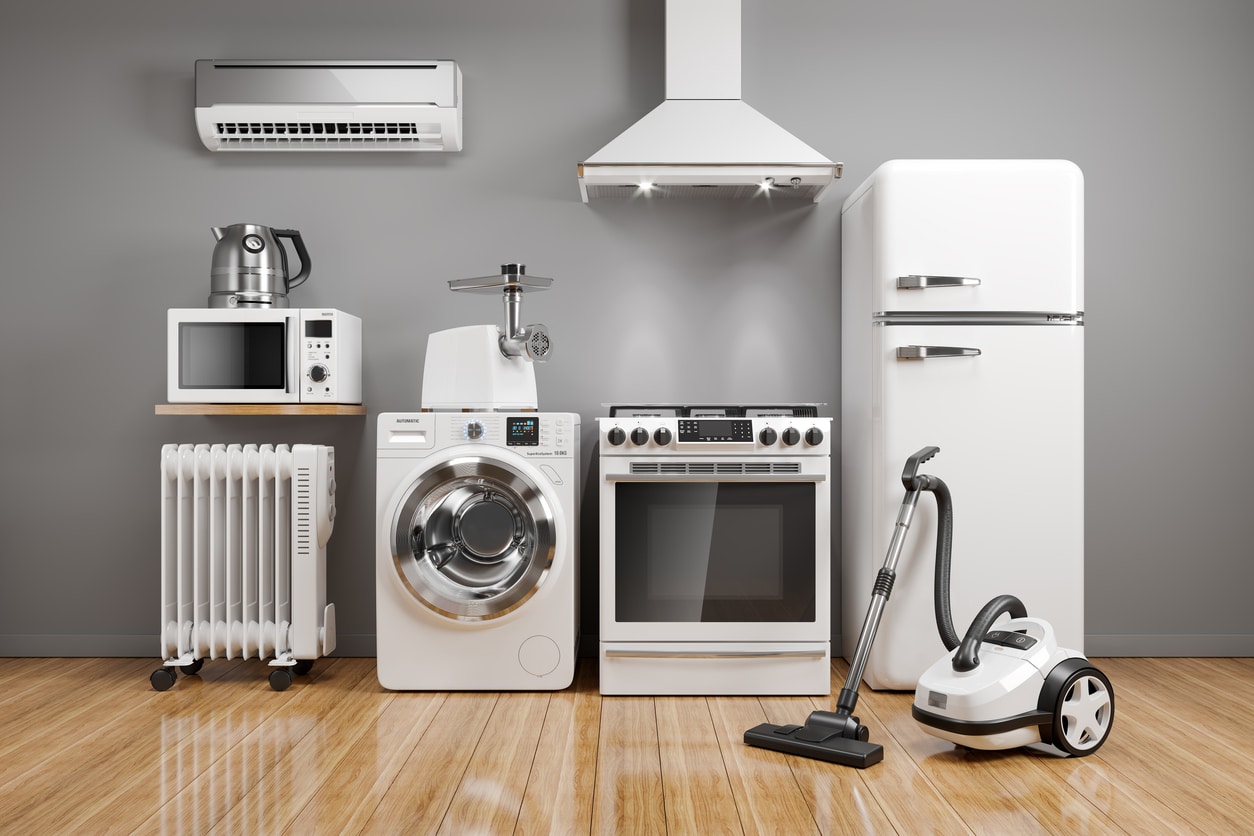What Appliances Qualify for the Energy Tax Credit?

Between rising energy costs, increasingly warmer summers, and winters that can sometimes prove unpredictable, it might be time––finally!–– to replace your home’s aging heat pump.
The shoulder seasons of fall and spring are a great time to replace key appliances, and upgrading can not only mean potentially lower electricity bills—you may also qualify for a tax credit.
Homeowners can save up to $3,200 on their taxes each year through qualifying energy-efficient upgrades. This is encouraging news, but it’s important to understand that not every home upgrade or appliance—no matter how energy efficient—will count. Let’s take a closer look at which appliances qualify for the energy tax credit, and consider when it may be worth financing these appliances.

|
$1,000-50,000
Loan Amount
|
8.49-35.99%
APR
|
3–7 years
Terms
|
560
Minimum Credit Score
|
Disclaimer
Personal loans made through Upgrade feature Annual Percentage Rates (APRs) of 8.49%-35.99%. All personal loans have a 1.85% to 9.99% origination fee, which is deducted from the loan proceeds. Lowest rates require Autopay and paying off a portion of existing debt directly. Loans feature repayment terms of 24 to 84 months. For example, if you receive a $10,000 loan with a 36-month term and a 17.59% APR (which includes a 13.94% yearly interest rate and a 5% one-time origination fee), you would receive $9,500 in your account and would have a required monthly payment of $341.48. Over the life of the loan, your payments would total $12,293.46. The APR on your loan may be higher or lower and your loan offers may not have multiple term lengths available. Actual rate depends on credit score, credit usage history, loan term, and other factors. Late payments or subsequent charges and fees may increase the cost of your fixed rate loan. There is no fee or penalty for repaying a loan early. Personal loans issued by Upgrade's bank partners. Information on Upgrade's bank partners can be found at https://www.upgrade.com/bank-partners/.
Is there really a federal tax credit for appliances?
Yes! The Inflation Reduction Act of 2022 supports homeowners who make their homes more energy efficient by providing federal tax credits and deductions for certain appliances and improvements that lead to reduced energy consumption.
Additional state and local credits may also be available, but we’ll focus on energy credits at the federal level for now.
What appliances qualify for energy tax credits?
Let’s run through some key appliances that qualify for a tax credit and how much credit they can actually earn.
Heat pumps
Upgrading your heat pump can net you up to $2,000 in energy tax credits by allowing you to claim 30% of the project cost. Qualifying heat pumps include:
- Air source heat pumps, both ducted and ductless
- In the southern part of the U.S., all ducted heat pumps that have an ENERGY STAR label will qualify.
- In the northern states, all ducted heat pumps designated as ENERGY STAR Cold Climate with an EER2 ≥ 10 qualify.
- In the south, ductless ENERGY STAR-certified heat pumps with SEER2 ≥ 16, EER2 ≥ 12, or HSPF2 ≥ 9 qualify.
- In the north, ductless ENERGY STAR Cold Climate heat pumps with SEER2 ≥ 16, EER2 ≥ 12, or HSPF2 ≥ 9.5 qualify.
- Geothermal heat pumps that are ENERGY STAR certified and use the ground or groundwater as a thermal energy source (for heat) or energy sink (for cooling).
Water heaters
Switching to an energy-efficient water heater also allows you to claim 30% of the project cost—up to $2,000 in the case of a heat pump water heater, or up to $600 for natural gas, oil, or propane water heaters. All water heaters must be ENERGY STAR-certified to qualify, in addition to these specifics:
- Gas storage water heaters that are ≥ 0.81 UEF for tanks less than 55 gallons, or ≥ 0.86 UEF for tanks 55 gallons or larger.
- Tankless gas water heaters that are ≥ 0.95 UEF.
Biomass stoves or boilers
These stoves burn biomass fuel—crops, wood, wood waste, plants, and so on—to heat a home or water. Upgrading to a biomass stove allows you to claim 30% of your project cost up to $2,000, as long as it has a thermal efficiency rating of at least 75%.
Natural gas, propane, or oil boilers
You can claim 30% of project costs up to $600 as long as ENERGY STAR-certified gas boilers are rated with AFUE ≥ 95%. Oil boilers must be manufacturer-rated for use with fuel blends comprising at least 20% biodiesel, renewable diesel, or second-generation biofuel.
Central air conditioners
New central air conditioning units that are ENERGY STAR-certified with SEER2 ≥ 16 are eligible for credits worth 30% of the project cost up to $600.
How do I claim appliance energy tax credits?
You can claim qualifying energy tax credits when you file your federal income taxes for the year in which the upgrades were made. You’ll need IRS Form 5695, and don’t forget to keep the receipts for the cost of your appliance and installation in a safe place.
What appliances do not qualify for tax credits?
Unfortunately, the most common appliances we use daily—like dishwashers, refrigerators, washing machines and dryers, and ovens—don’t qualify for the energy tax credit. This is because they don’t use as much energy as heating and cooling systems.
But, if you’re thinking about upgrading one of these household appliances, it’s still a good idea. Nearly all appliances on the market today are rated for energy efficiency, so you’ll likely save money on operating costs by making the switch to a more eco-friendly model.
How much do energy tax credit appliances cost?
The cost to upgrade your heating and cooling appliances will vary by location, specific model, and whether you’ll install it yourself or not, but to give you a general idea:
- The median price of a new heat pump and installation is about $16,000.
- A water heater and installation can range from $900 to $4,000.
- A biomass stove will likely run anywhere between $1,500 and $5,000.
- The average cost of a new boiler is about $7,200.
- The average cost of a new central air conditioner is approximately $5,600.
Can I finance energy-efficient appliances?
As you see above, upgrading your heating and cooling systems can be expensive. Luckily, financing options are available, and Acorn Finance is a great place to start.
With Acorn Finance, you fill out just one loan application and watch as lenders compete to offer a loan that works best for you. You can see initial offers within just one minute, all without affecting your credit score. Payment options are simple and straightforward, and when you find a loan you like, you’ll have your money fast. Funding times may vary, but Acorn Finance partners with a strong network of reliable lenders who can often fund successful loans within just one or two business days.
Start your loan application with Acorn Finance today.
Comparing options on Acorn Finance? See if you prequalify for a personal loan without impacting your credit score.
Just answer a few questions to get personalized rate estimates from multiple lenders.
